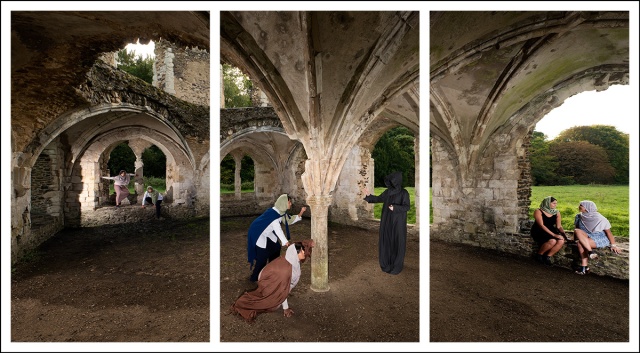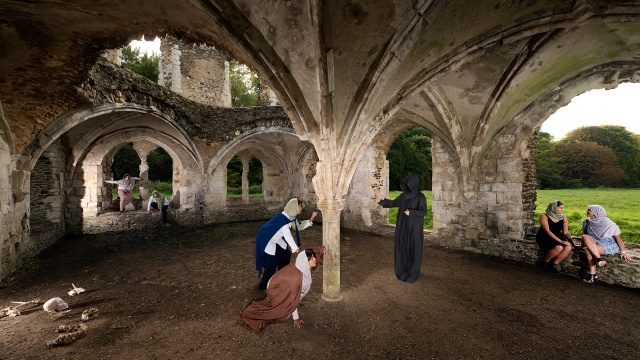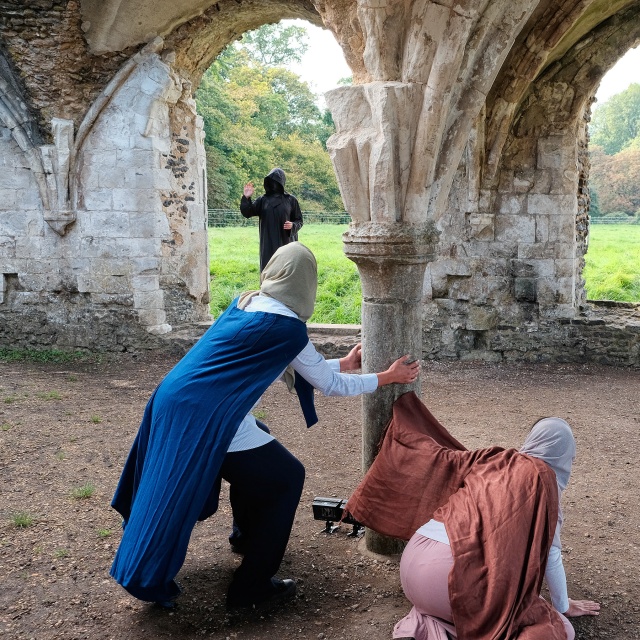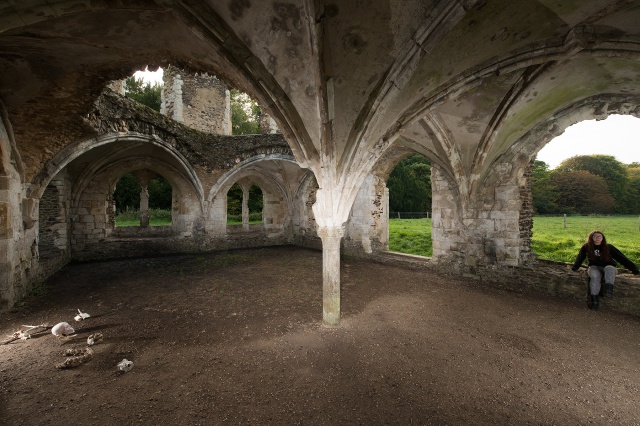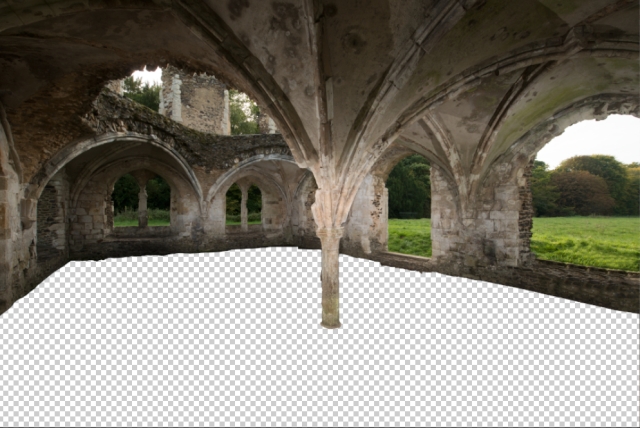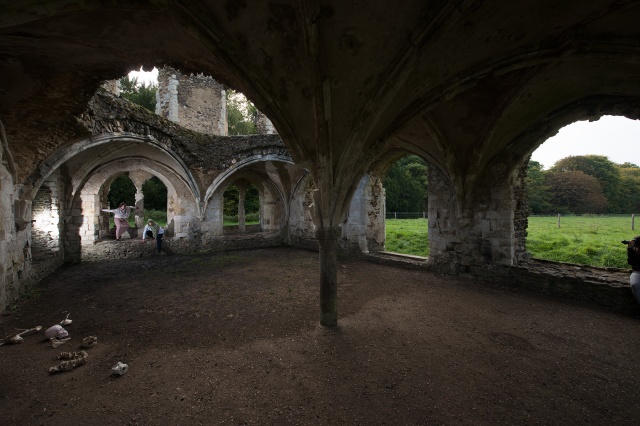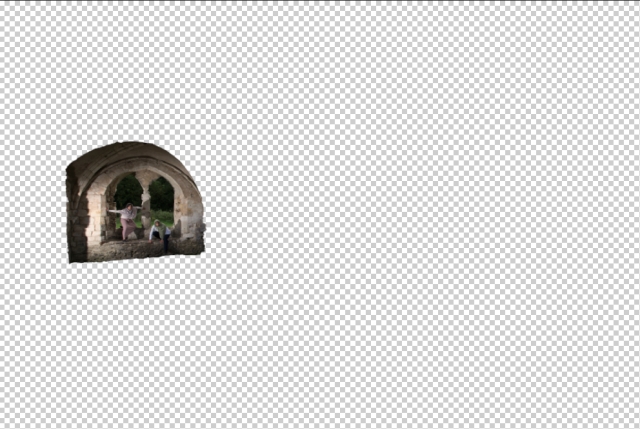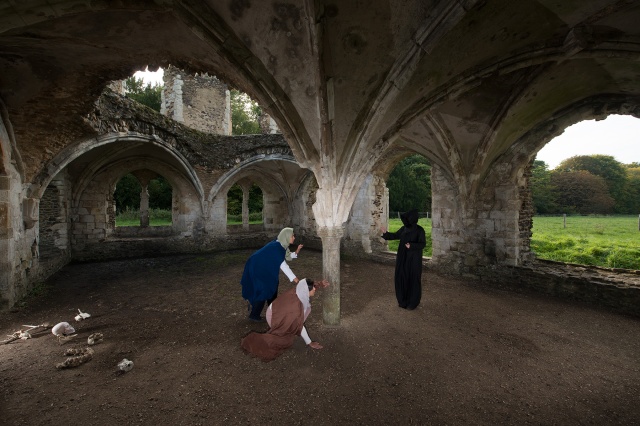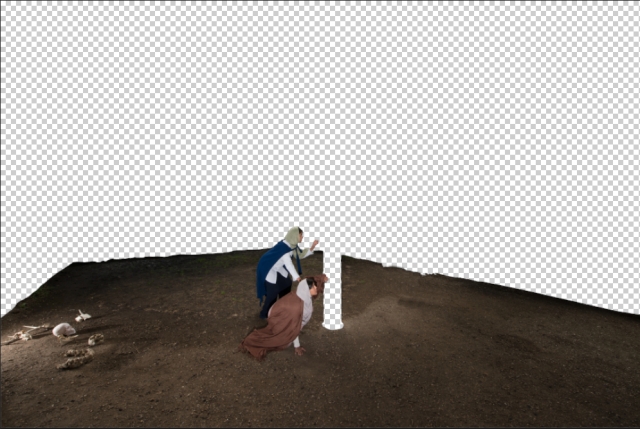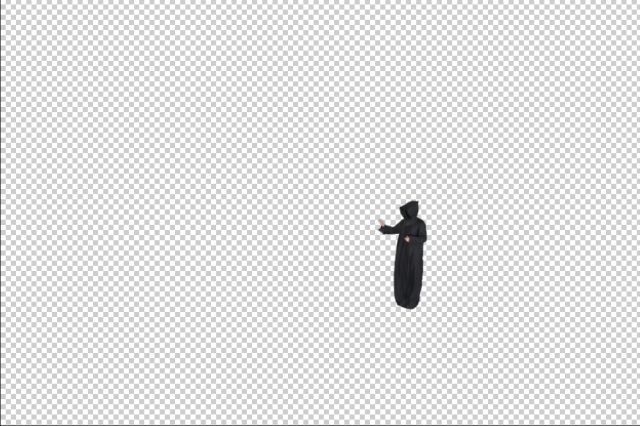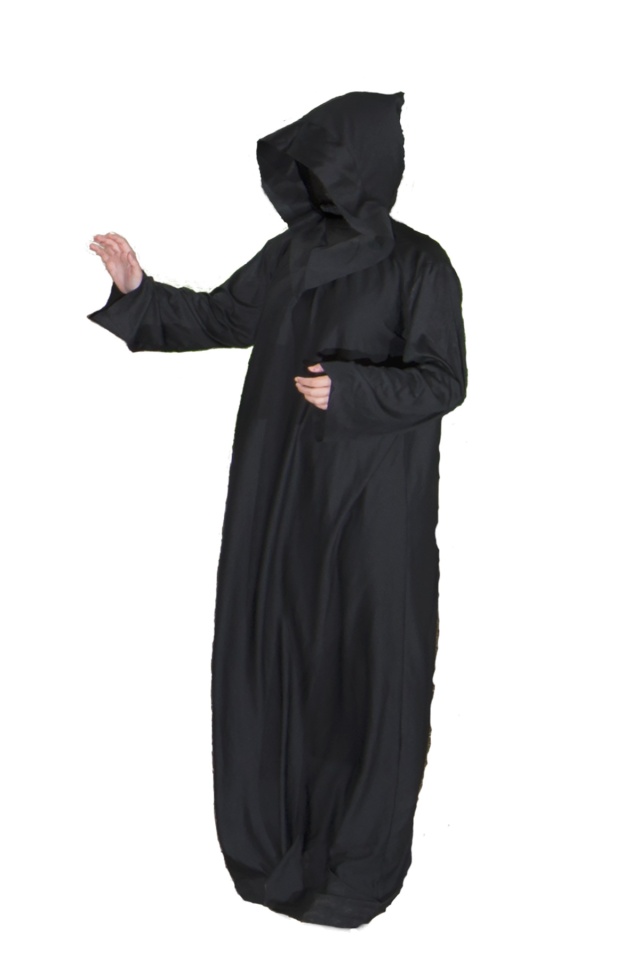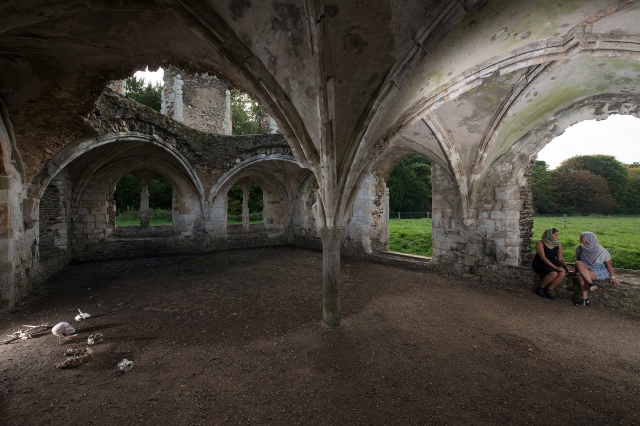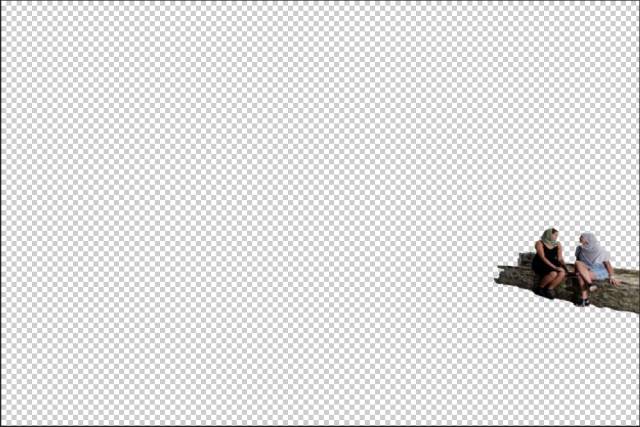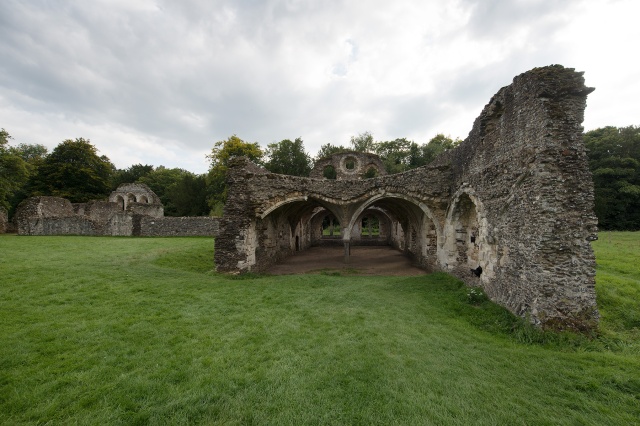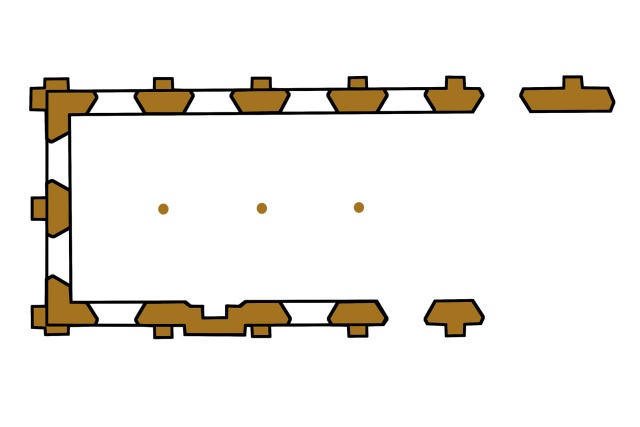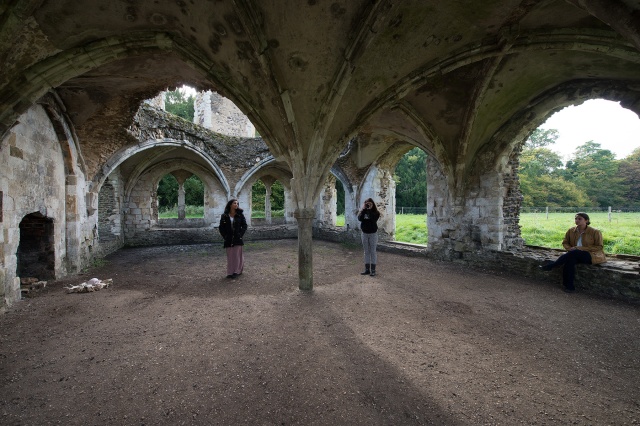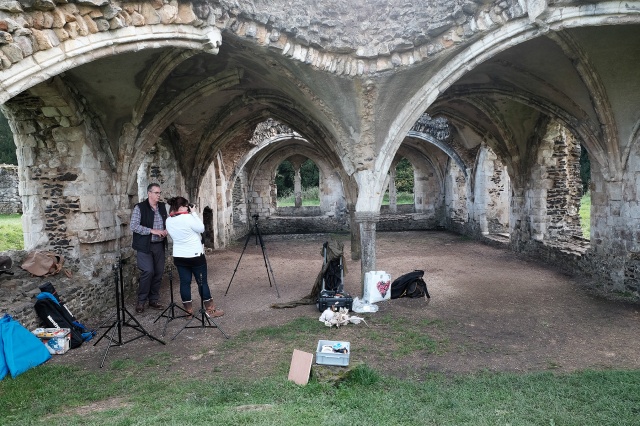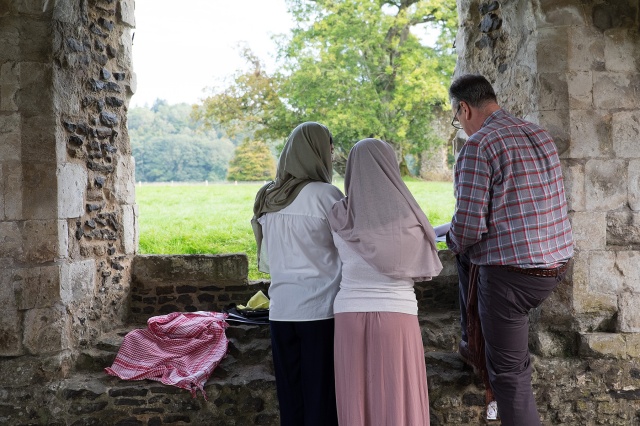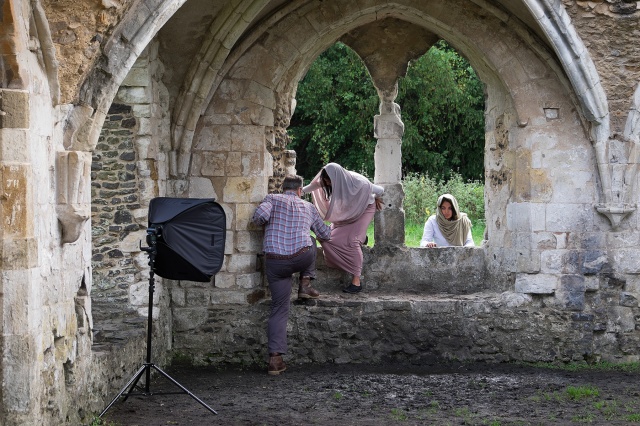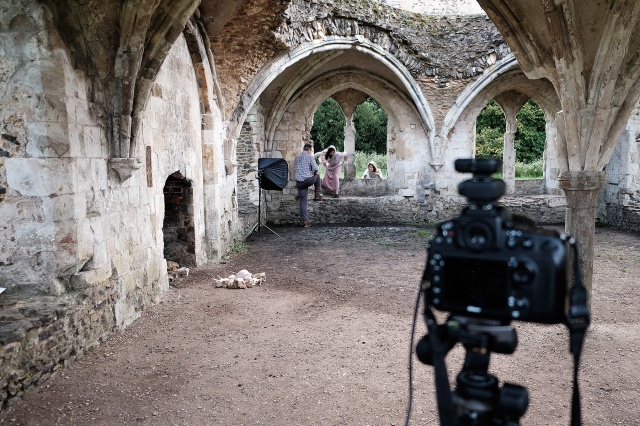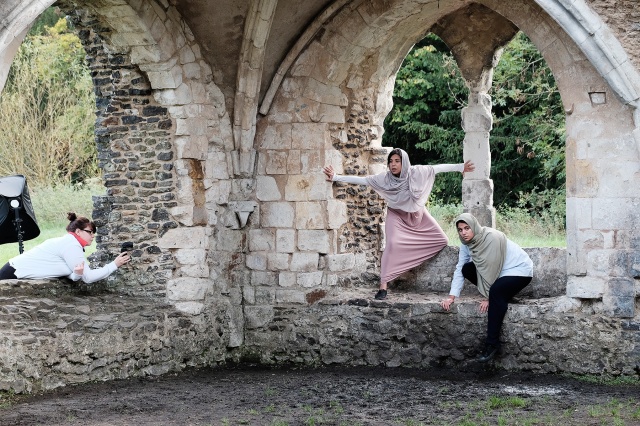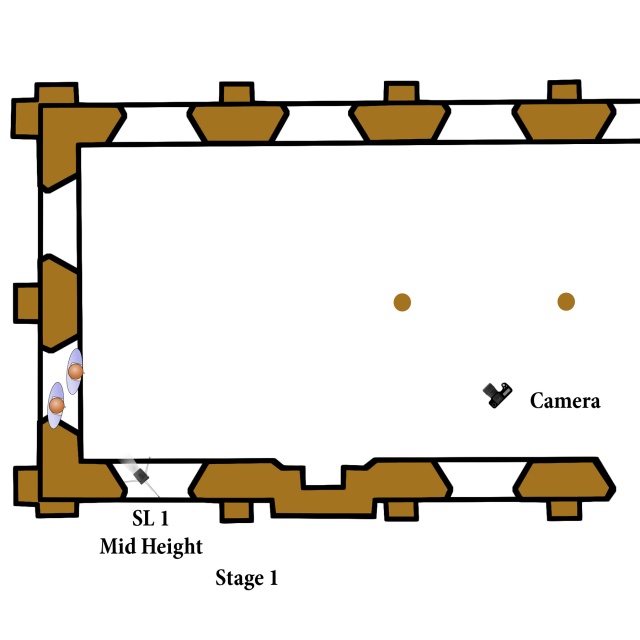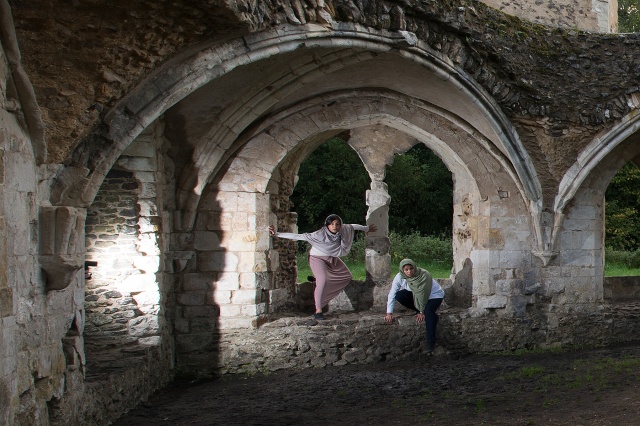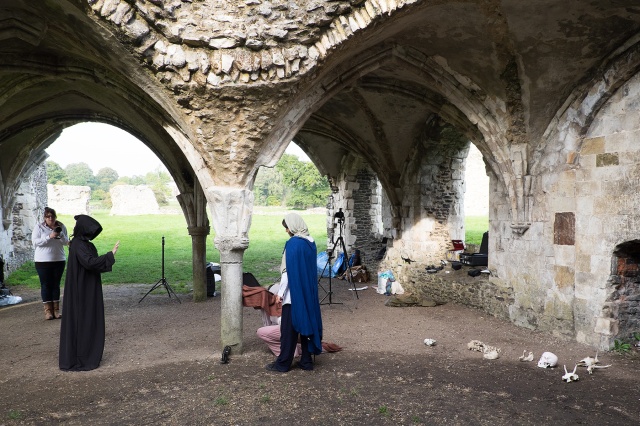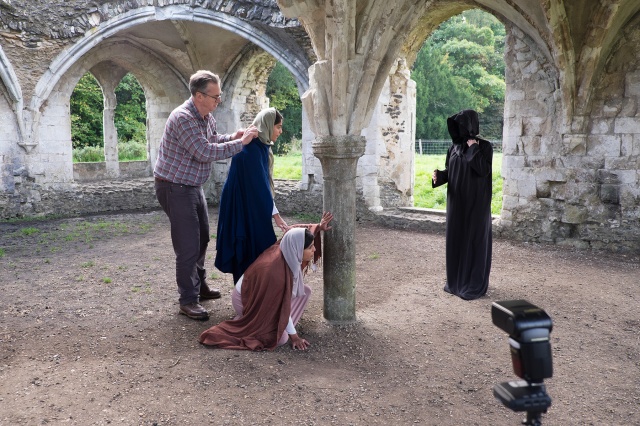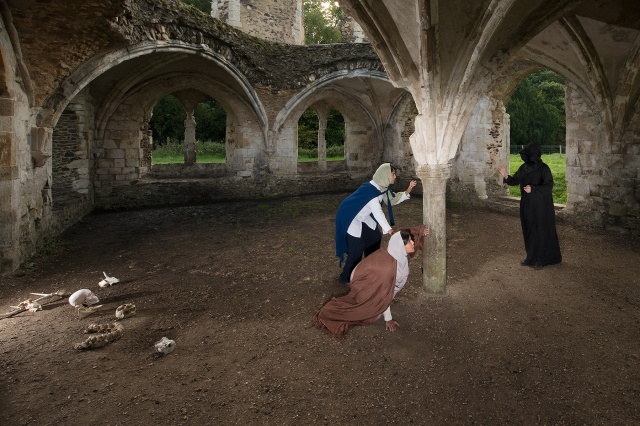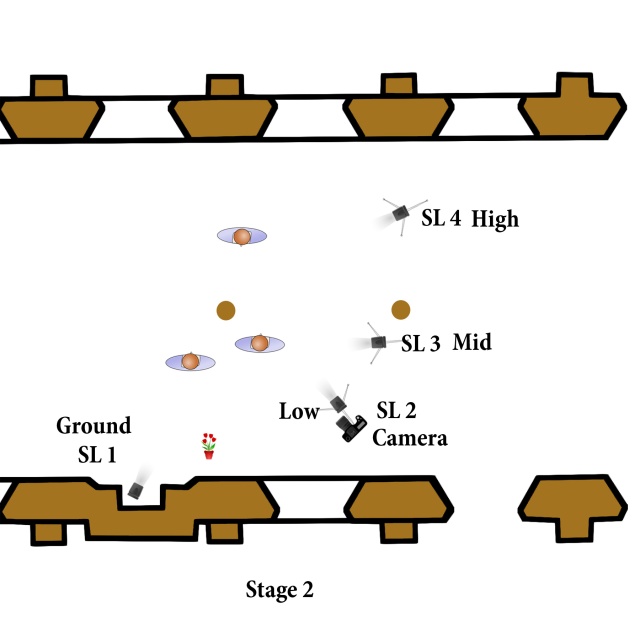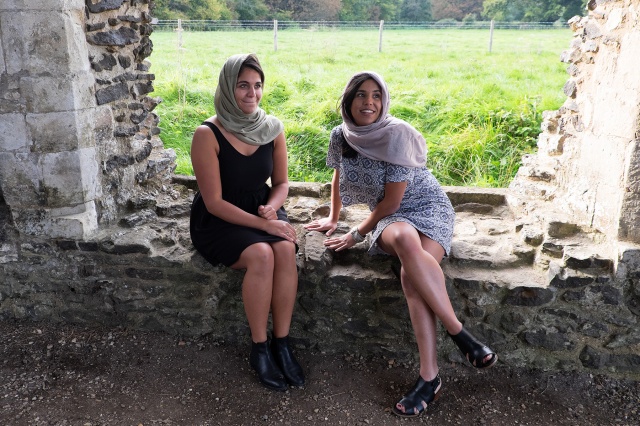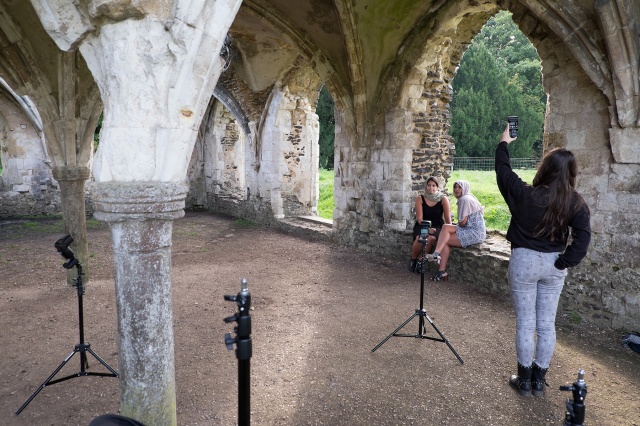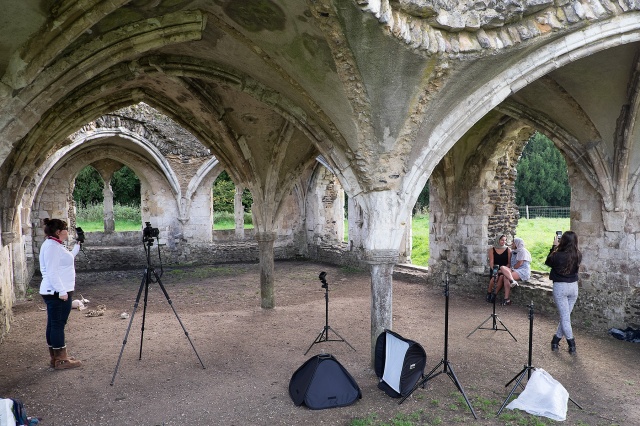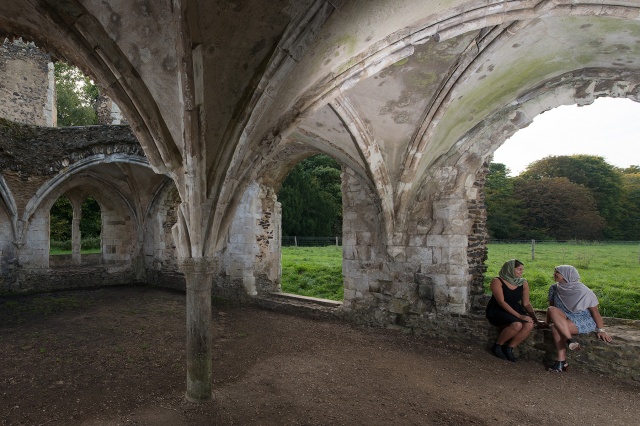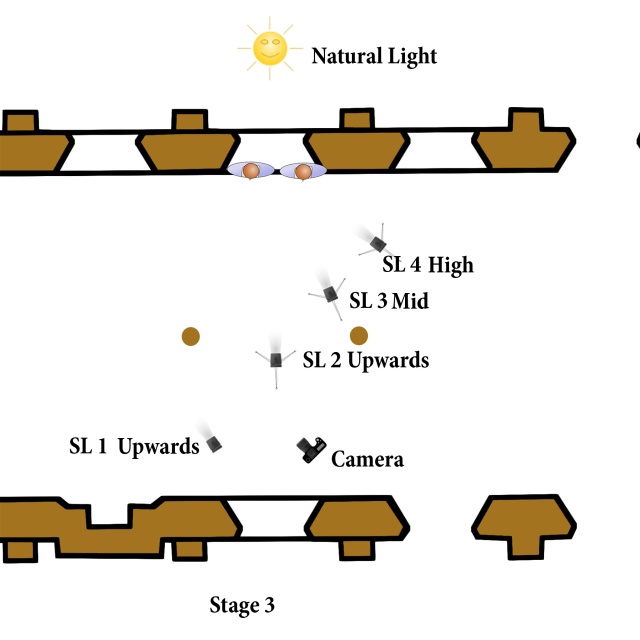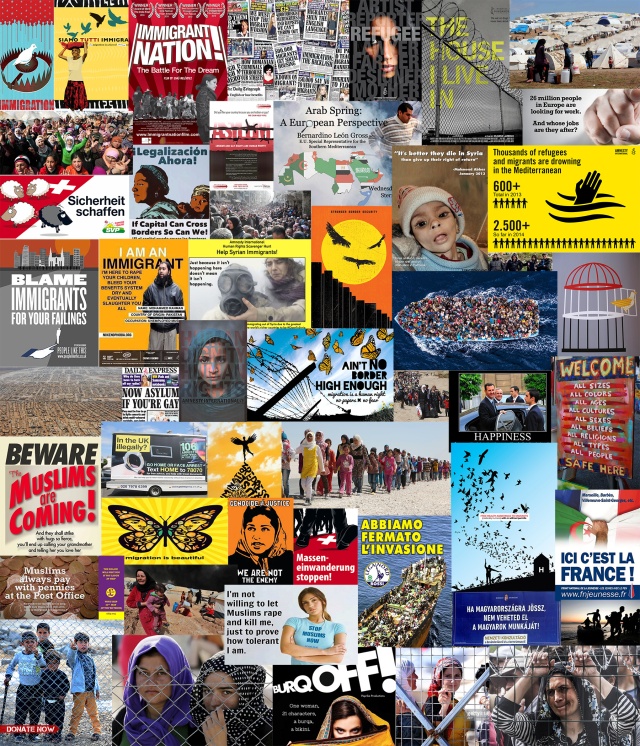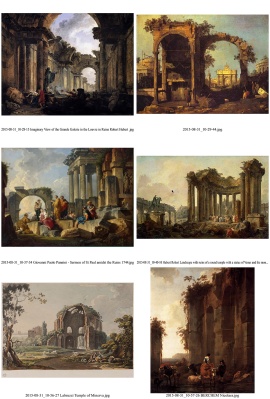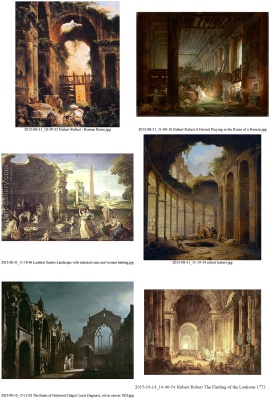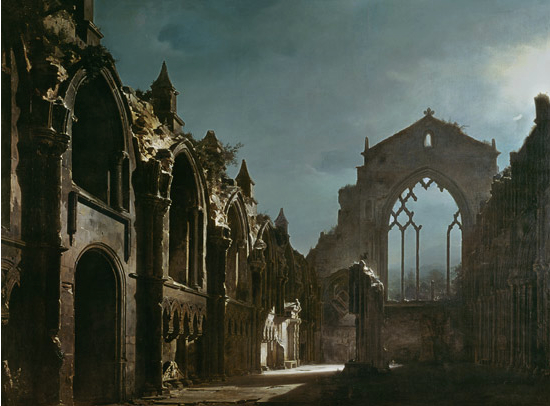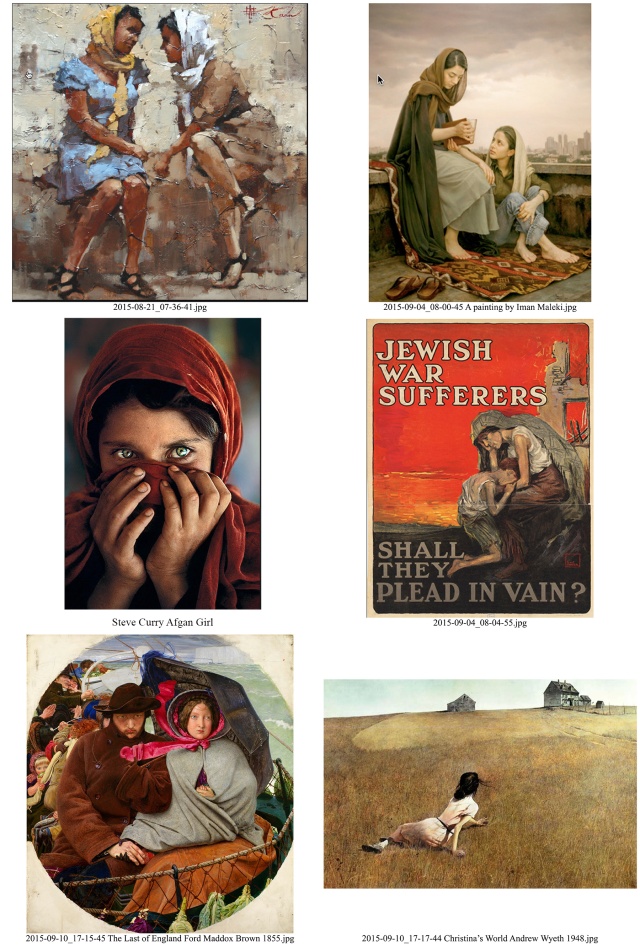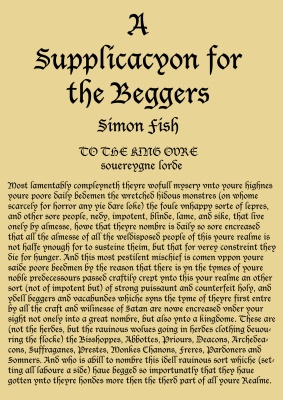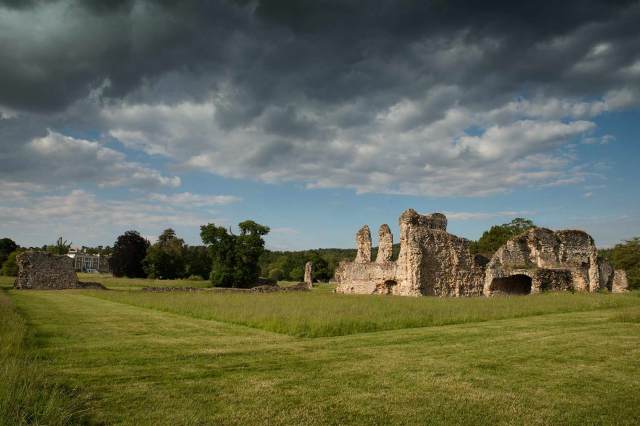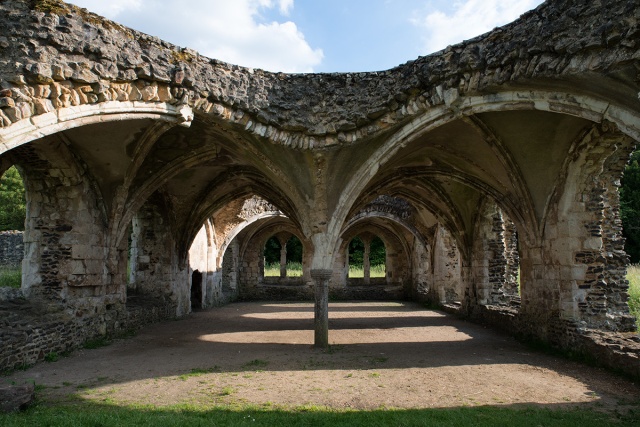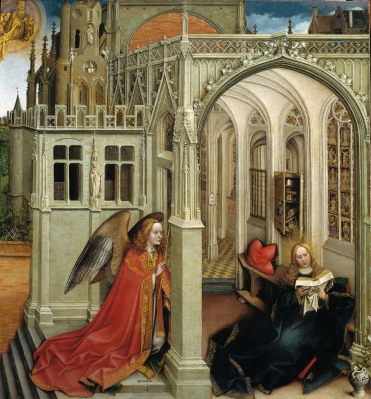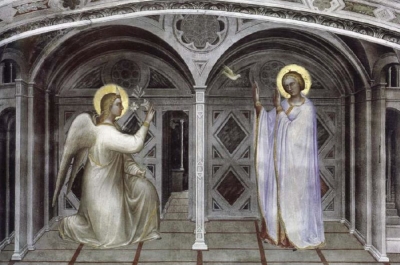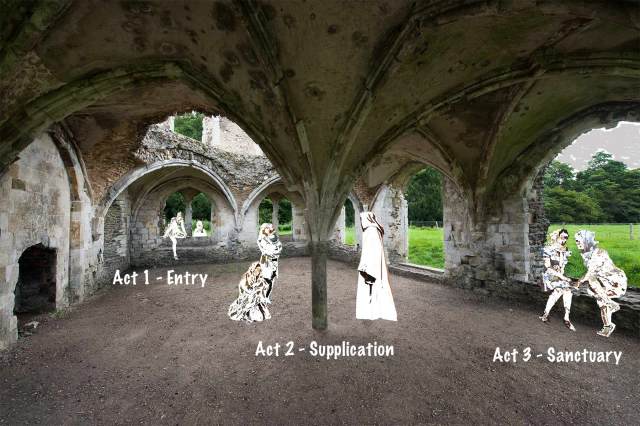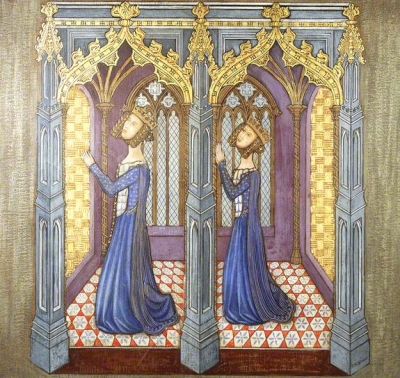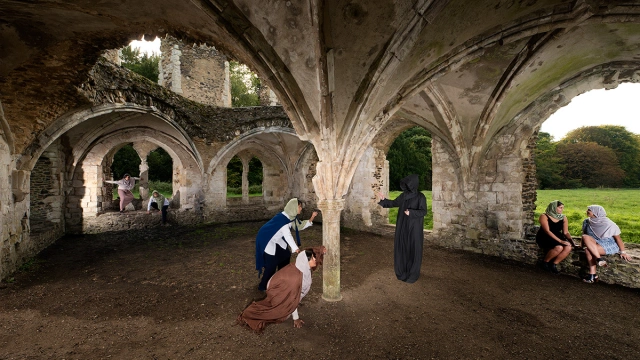
Assignment 5 – Supplication
Notes on Rework
This rework of assignment 5 has been modified to remove the bones and skulls which had been included in the foreground of the original. I agree that they were a clichéd sign so whilst the composition is less balanced it is less cluttered and perhaps a little less sinister.
Historical Context
In 1529 a Protestant lawyer by the name of Simon Fish wrote and distributed a pamphlet, asking Henry VIII to dissolve the monasteries and to appropriate their lands and wealth for the good of the nation. At the heart of his complex theological arguments he highlights that the poor had been reduced to begging whilst the monasteries housed over-weight, idle, holy, thieves who had become rich on taxes and by charging to pray for the rapid passage of souls through purgatory. (i)
I see a direct parallel between Fish’s arguments and contemporary discussions regarding immigration. The foundation for the wealth of Europe was laid in the 17th Century as successive European nations began to conquer and colonise the Americas and Asia Pacific, and later, India, the Middle East and Africa with the sole objective of systematically exploiting the resources of the less militarily sophisticated civilisations we found there. Today, Britain’s population makes it the 22nd largest country on Earth but we boast the 5th largest economy; this wealth has dark roots in the exploitation of the human and natural resources of the largest Empire the world has ever seen. We and the other European nations and more recently the USA created the economic imbalance that draws the poor and economically suppressed to our borders.
Britain, France and Italy have long seen North Africa and the Middle East as being within their sphere of influence, an attitude that has led to varying degrees of instability since the collapse of the Ottoman Empire. In recent times we have supported America in ill thought through military interventions that have destabilised whatever fragile balance might previously have existed.
Modern Europe is the medieval monastery, enriched and fattened by exploitation, extracting a tithe beyond the imagination of the most capricious Abbot; and still, like the Abbot, we believe it is our divine duty to prescribe our sociopolitical and economic models on others. The harvest of our arrogance is the largest mass migration of humans since WWII but many Europeans argue the solution is to put new locks on the gates and to build a higher wall around the monastery. Fish didn’t live to see the medieval monasteries brought down; what will our children and grandchildren see in their lifetime?
Further thoughts on the social and historical context of this assignment can be found here and here.
Documentary Tableau
The extent to which it is justifiable to photograph the victims of social and political injustice is one of the most important ethical debates in contemporary photography (ii). To avoid Susie Linfield’s “fraught enterprise” [(2) (here)] and as a photographer taking pictures nearly exclusively for my own amusement, it is important for me to identify indirect approaches to documenting social injustice. I began this course using Late Photography to discuss the invisibility of the homeless (here) and there is a sense of having closed the circle by finishing the course using Staged Photography to explore migration and its impact on human dignity and identity.
Narrative
Supplication is a staged, tableau containing a narrative that flows from back to front and left to right. It tells the story of two women entering the ruins of a monastic building, a location that symbolises the idea of sanctuary (iii) and of wealth, where they are forced to beg for entry from a figure of authority before reaching a place of safety.
The narrative is represented in three separately constructed scenes using the same two models and one additional model to play the part of the authority figure. The scenes were subsequently merged into single photograph during post processing (here). The shoot plan (here) and the lighting and set plans (here) are described in previous essays.
Scene 1 Trepidation
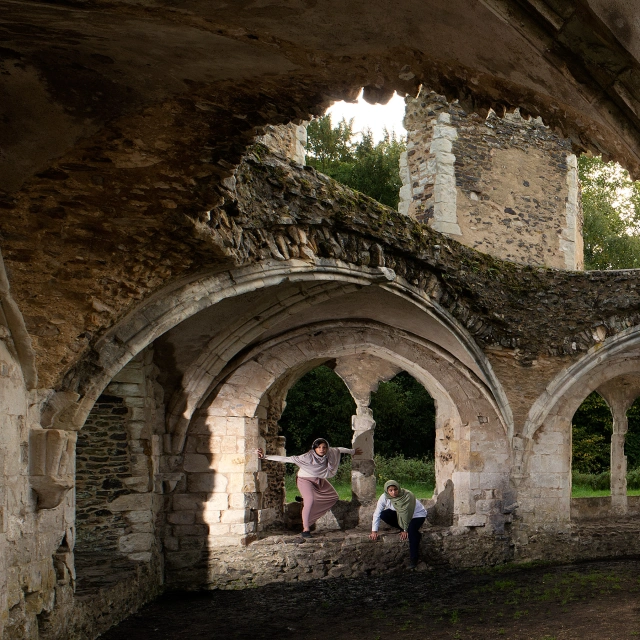
Scene 1 – Trepidation
In the first scene two women enter a place of potential safety. Their pose is directed to suggest trepidation, uncertainty and apprehension. Their costumes, which cover all but their face and hands, were sourced from charity shops and the models are British women who are not associated with any particular organised religion.
This scene begins a process of exploring the women’s identity, a theme that continues throughout the tableau. I have intentionally used costumes that are not Eastern in origin, they have almost certainly never been worn by Muslim or Hindu women; the costumes ask whether the simple act of covering their arms, legs and hair directs the audience to read these characters as aliens. As the audience is aware that this tableau is staged this immediately begins to question how easily we can project an altered reality.
The audience recognises them as outsiders, foreigners, characters with a sense of otherness. This symbolises the disparity between attitudes towards immigrates who look like “us” such as Irish, Australian or South African immigrants and those who look “foreign” and therefore carry some undefined but feared threat to our national identity or security. I have chosen young women models to emphasise the imbalance between this assumed threat and any real threat that they could offer.
Their pose suggests that the women have entered through the window, an act of breaking and entering which speaks to the criminalisation of the migrant. The migrant, who by nature is no more or less law abiding than any other person, is forced to break the law to cross borders and potentially, on reaching their goal, becomes an “illegal immigrant”; by escaping from persecution, starvation or war they have changed their identity from citizen to criminal, from insider to outlaw.
A holy place is metaphysically different from the surrounding mundane world. To enter its precinct is to cross from a secular landscape to a spiritual and godly space. This offers a metaphor for the immigrant crossing an invisible national border to escape danger and find salvation or sanctuary.
Scene 2 Supplication
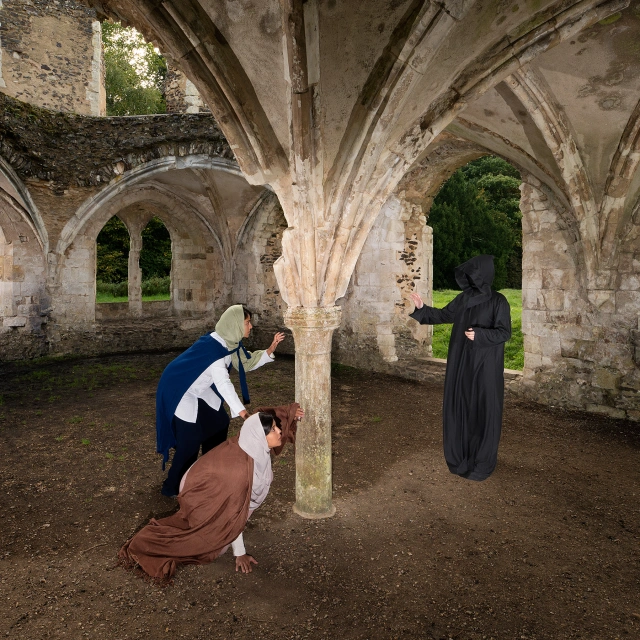
Scene 2 – Supplication
In the second scene the women are crouched to the left of a pillar facing, on the other side of the pillar, a black robed figure who is monk-like in appearance to provide a clear link to the setting and to symbolise authority.
The word “supplication” is important to the meaning of this scene. It not only links the photograph to Simon Fish’s pamphlet but is a word we associate with the religious act of prayer. It also holds the meaning of “a humble plea; an earnest request or entreaty, especially one made deferentially to a person in a position of power or authority.” (4). This definition denotes the humbling of an individual when making a request, a loss of dignity and the requirement to become subservient to the person in authority.
Supplication speaks to the idea that an immigrant’s identity and self worth are fundamentally and negatively modified by the very act of requesting asylum. Having the power to offer or refuse sanctuary gives the established authority power over the supplicant, who hitherto was not within their sphere of influence.
The pillar that divides this scene references the use of pillars in medieval religious art to separate the mundane from the divine (iv); in this scene it divides the danger of where they have come from and the safety of their destination.
The audience cannot see the face of the monk-like figure which symbolises the faceless nature of the authority who decides the migrant’s fate. The supplicants are recognisable as people, with gestures and expressions that denote their humanity, whilst the authority figure is an ambiguous entity with no visible expression making a gesture that could be interpreted as “wait”, “stop” or a blessing or even “stay calm”.
The supplicants continue to be in their all-covering costumes with the addition of shawls to emphasise that they remain outside and in-the-cold.
Scene 3 Sanctuary
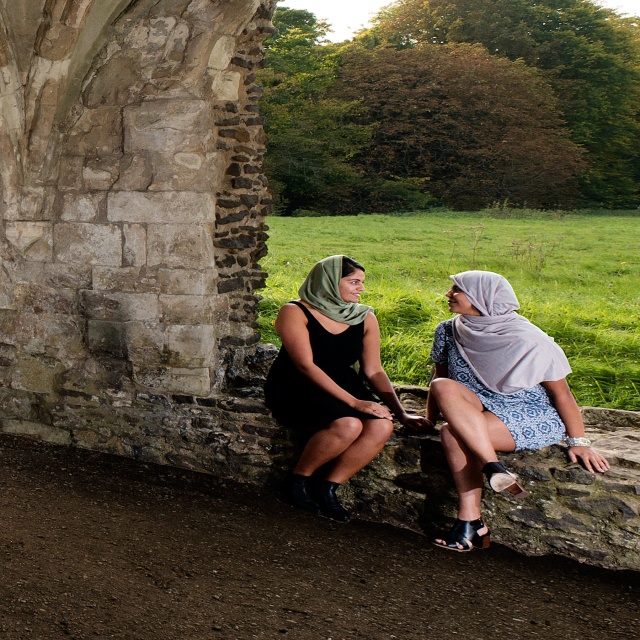
Scene 3 – Sanctuary
In the final scene the two women have reached a place of safety, they rest in a pastoral setting. Their pose is directed to be relaxed and cheerful.
Their pose and costume introduce ambiguity to this scene. On the one hand both women have exposed their legs and arms but they continue to cover their hair which might suggest they are Muslims or Hindus yet the women on the right is pointing the sole of her foot at the camera, an act considered to be rude in most Eastern religions and profane if done towards a priest. (v)
This scene is intentionally open to interpretation; are the women now Westernised; is the retention of their head scarfs the last vestige of their previous identity or was this their identity from the outset? The ambiguous nature of their identity might suggest that they are in transition and that their journey is far from over. The intention is for the audience to be unclear regarding the origin, nationality and religion of these characters. The idea throughout the story is that they were only ever two young women and their costume is merely a distraction and not a definition of their identity.
Other Symbolism
Much of the rest of the symbolism in the overall image is derived from the building and its history. Waverley Abbey, the first Cistercian house in Britain, was founded by thirteen French immigrants in 1128 which speaks to the ideas expressed in my earlier essay “before we were us we were them“. We are all descended from immigrants, the only difference between us is when our ancestors arrived.
The Cistercians were known as hard working and frugal devotees of a demanding order so they may have been sympathetic to the plight of a displaced person. The tableau intends to imply that sanctuary has been requested and given, an act of charity and mercy but it questions the relationship between the supplicant and the authority figure.
Despite their frugal nature the wealth and lifestyle of a Cistercian was still far removed from the status of a contemporary peasant (vi) so the Abbey is a metaphor not just for a safe haven or a sanctuary, but as a place of abundance. The immigrant is moving from danger to safety and from shortage to the promise of plenty. There is an inference that there is no financial reason for refusing entry.
Influences and Artistic Context
This project has been influenced and inspired by staged photography, figurative art, graffiti, romantic painting, photojournalism, news media, political posters and medieval art, please refer to the the essay Assignment 5 Influences and Inspiration for details.
Acknowledgements
This project needed the help and collaboration of a small team of generous individuals.
Laura and Harriet Smithers are two actresses just starting out on, what is sure to be, a successful career in the arts. They willingly played the part of the two migrants which required a long and cold afternoon in the damp, dark interior of the Abbey with a cold wind whistling through the ruins. Their enthusiasm and the ideas they contributed are greatly appreciated.
Rebecca Middlehurst, my daughter, and the Head of Art at Sarum Academy in Salisbury, was hugely supportive. After helping to carry all the equipment to the Abbey she uncomplainingly moved light stands back and forth, kept everyone’s spirits up and made helpful and positive suggestions.
Sophie Stevens, who is currently studying for her GCSE Photography acted as the on-set photographer taking photographs of the set-up and the action and played the part of the monk. The monk’s costume, left over from a fancy dress party, was extremely uncomfortable and offered absolutely zero visibility to the wearer so Sophie was in complete darkness whilst being physically moved around the set.
Notes on Text
(1) A Supplication for the Beggars (1) was written by Simon Fish in 1529 strongly criticising monks as “greedy serfs” and “sturdy idly holy thieves”. This pamphlet has an ironic twist which fits well with the theme. Fish argued that the monasteries, who as well as their own industry and agriculture took a tithe of 10% of all families’ income, should be dissolved and their wealth and lands handed over to Henry VIII. Fish also argued that there was no such place as purgatory. This argument may appear philosophical to the modern mind but if the world at large came to doubt purgatory’s existence the economic consequences for the church were enormous as all their establishments from the local monastery to the Vatican offered a service to pray for the soul’s rapid progression through purgatory. The number of prayers and the period over which they would be offered was based on the value of an individual’s contribution to the church. The irony is that Fish was charged with heresy for proposing a strategy that Henry and his righthand man Cromwell implemented only seven years later. Waverley Abbey was suppressed in 1536 and its wealth and land handed to Sir William Fitzwilliam the treasurer of the King’s household who probably wsn’t one of the poor that Fish was concerned about.
(ii) I see this as one of the most important ethical debates in contemporary photography and have previously discussed the issues and the views of Rosler and others (here and here). I have also discussed how various practioners have found ways to continue to address documentary subjects without committing what Abigail Solomon-Godeau (5) called the “double act of subjugation” by exploiting people who are already suppressed by society (here).
(iii) According to Karl Shoemaker (3) the church jealously guarded their right to protect a criminal within the walls of a consecrated church for over a thousand years. He argues that this practice had its roots in Roman law where an aristocrat could intercede on behalf of his followers, an idea that merged with the Christian teachings of clemency and the pardon of repentant sinners. The practice remained part of English common law until its abolition in the 16th century.
(iv) In medieval religious art a pillar was often used to show the division between heaven and earth or the divine and the mundane as shown in these two different interpretations of the annunciation by Robert Campin and Giusto de Menabuoi. (10)
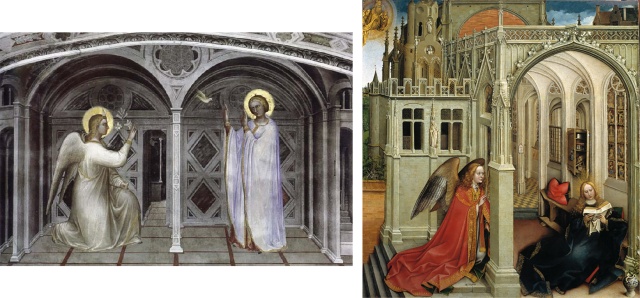
Giusto de Menabuoi Annunciation 1376-78 and Robert Campin, Annunciation (1418-1419)
(v) “In predominantly Hindu and Muslim countries, it is considered extremely rude to point the soles of the feet toward another person. The head is considered to be the most sacred part of the body, the part of the body closest to heaven, whereas the feet are considered to be the most profane part of the body, both the lowest and the closest to the devil or hell. Therefore, pointing the feet at other people and particularly at priests, holy men or religious statues is considered taboo.” (5)
(vi) Janina Ramirez in her recent TV documentary Saints and Sinners which charts the rise and fall of the British monasteries presents recently discovered evidence that whilst the life expectancy of an “ordinary” medieval male peasant was between 25 and 30 years the skeletons of monks indicate that many, if not most, lived into their 50s, 60s and beyond. The same scientists also discovered that diabetes and syphilis was not uncommon in monastic populations. (9)
Sources
Books
(1) Fish, Simon (1529) A Supplicacyon for the Beggars. Edited by Edward Arbor. Gutenberg eBook, Kindle Edition.
(2) Linfield, Susie (2010) The Cruel Radiance: Photography and Political Violence. Chicago: The University of Chicago Press
(3) Farthing, Stephen (2006) 1001 Paintings You Must See Before You Die. London: Quintessence.
Internet
(3) Roach, Levi (2011) Review of Sanctuary and Crime in the Middle Ages by Karl Shoemaker. (Accessed at History Today 9.10.15) – http://www.historytoday.com/blog/2011/08/sanctuary-and-crime-middle-ages
(4) The Oxford Dictionary (accessed at OED 9.10.15) – www.oed.com
(5) The Soles of the Feet in Religious Beliefs (accessed at Opposing Views 18.10.15) – http://people.opposingviews.com/soles-feet-religious-beliefs-9331.html
(6) Ramirez, Janina (2015) Saints and Sinners: Britain’s Millennium of Monastries (accessed at the BBC 8.10.15) – http://www.bbc.co.uk/programmes/b052zxhm






